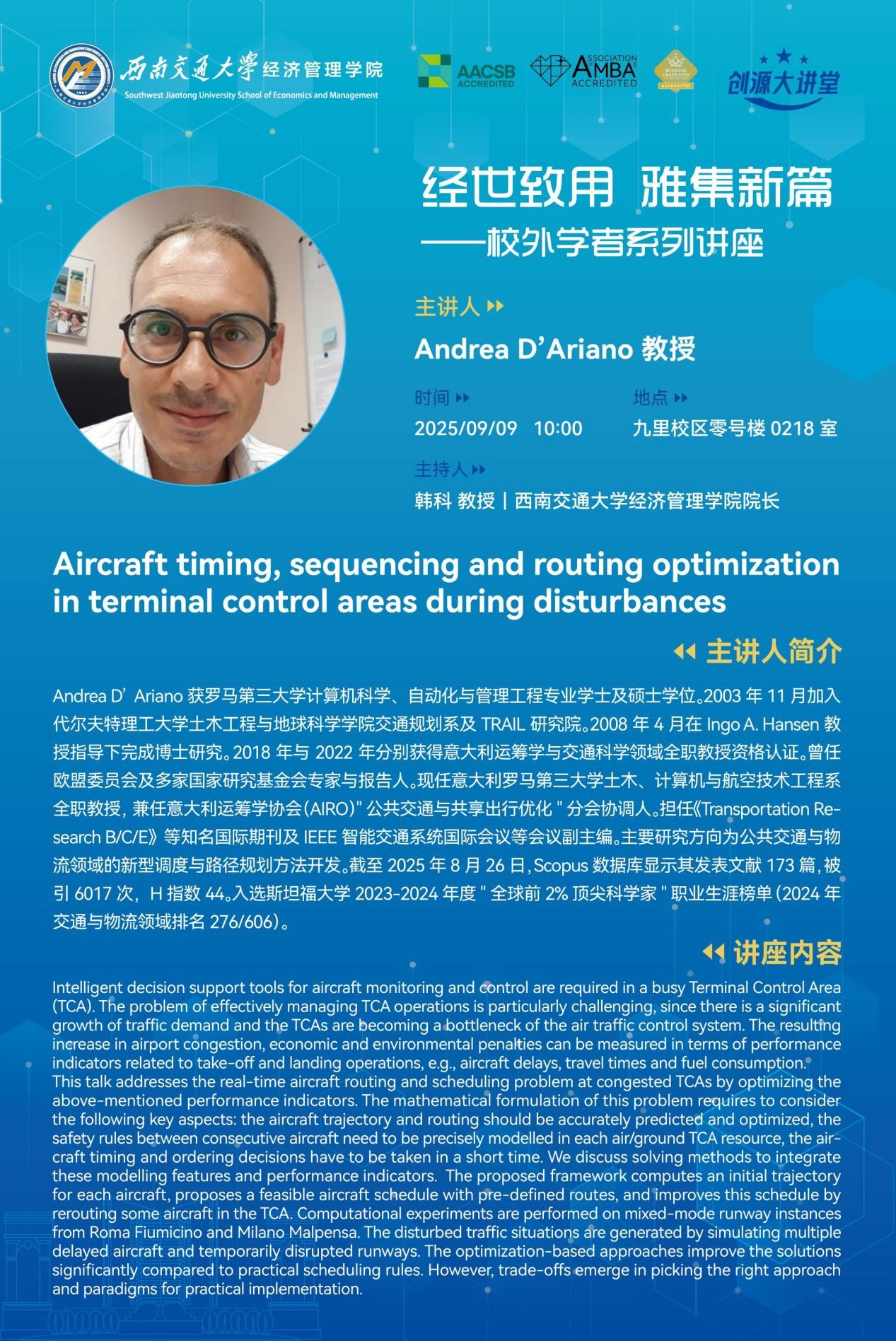Speaker Profile
Andrea D’Ariano holds Bachelor's and Master’s degrees in Computer Science, Automation, and Management Engineering from Roma Tre University.
In November 2003, he joined Department of Transport and Planning at Faculty of Civil Engineering and Geosciences at Delft University of Technology, as well as the TRAIL Research School. He earned his PhD in April 2008 under the supervision of Professor Ingo A. Hansen.
He received Italian National Scientific Qualification for Full Professor in Operations Research (2018) and in Transportation Science (2022). He has served as a reviewer and evaluator for the European Commission and several national research foundations.
Currently, Dr. D’Ariano is a Full Professor at Department of Civil, Computer, and Aeronautical Engineering at Roma Tre University, where he also coordinates the “Public Transport and Shared Mobility Optimization” section of Italian Association of Operations Research (AIRO). He is an associate editor for leading international journals, including Transportation Research Part B/C/E, and conferences such as IEEE International Conference on Intelligent Transportation Systems. His primary research focuses on developing novel scheduling and routing methods for public transport and logistics.
According to Scopus (as of August 2025), he has published 173 papers, which have received 6,017 citations, earning him an H-index of 44. He is recognized on Stanford University’s “World's Top 2% Scientists” list (2023-2024) for career-long impact. In the 2024 data, he was ranked 276 out of 606 scientists in the Transportation and Logistics field.
Abstract
Intelligent decision support tools for aircraft monitoring and control are required in a busy Terminal Control Area(TCA). The problem of effectively managing TCA operations is particularly challenging, since there is a significant growth of traffic demand and the TCAs are becoming a bottleneck of the air traffic control system. The resulting increase in airport congestion, economic and environmental penalties can be measured in terms of performance indicators related to take-off and landing operations, e.g., aircraft delays, travel times and fuel consumption. This talk addresses the real-time aircraft routing and scheduling problem at congested TCAs by optimizing the above-mentioned performance indicators. The mathematical formulation of this problem requires to consider the following key aspects: the aircraft trajectory and routing should be accurately predicted and optimized, the safety rules between consecutive aircraft need to be precisely modelled in each air/ground TCA resource, the air-craft timing and ordering decisions have to be taken in a short time. We discuss solving methods to integrate these modelling features and performance indicators. The proposed framework computes an initial trajectory for each aircraft, proposes a feasible aircraft schedule with pre-defined routes, and improves this schedule by rerouting some aircraft in the TCA, Computational experiments are performed on mixed-mode runway instances from Roma Fiumicino and Milano Malpensa. The disturbed traffic situations are generated by simulating multiple delayed aircraft and temporarily disrupted runways. The optimization-based approaches improve the solutions significantly compared to practical scheduling rules. However, trade-offs emerge in picking the right approach and paradigms for practical implementation.
Date/Time: September 09, 10:00 a.m.
Venue: Room 0218, 0 Teaching Building, Jiuliu Campus


